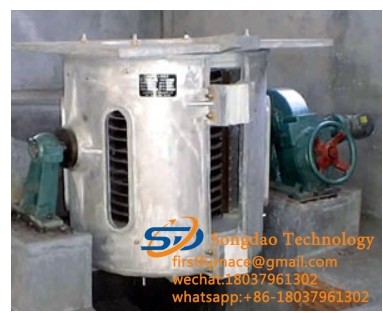- 11
- Aug
Refractory requirements for crucible of induction melting furnace
Refractory requirements for crucible of lò nấu chảy cảm ứng
The working conditions of the crucible of the induction melting furnace are very bad, and the lining wall is thin, and the inner side is directly affected by the thermal impact of the high temperature molten metal and the erosion of the slag liquid. The stirring force formed under the action of the electromagnetic field causes the Pershock wall to be strongly eroded by the metal. The outer side of the wall is in contact with the water-cooled induction coil, and the temperature difference between the inside and the outside is large. In order to increase the life of the collapse, there are strict requirements for the refractory material for making amber smoke.
(1) High enough high temperature resistance. The refractory material used to make the crucible should withstand high temperatures greater than 1700 RON, and the softening temperature should be greater than 1650 RON.
(2) Good thermal stability. The temperature of the crucible wall fluctuates greatly during operation, and the temperature field is unevenly distributed. Therefore, the wall will continue to produce volume expansion and contraction and cause cracks, which directly affects the service life of the increase.
(3) Stable chemical properties. Crucible materials should not be hydrolyzed and pulverized at low temperatures, are not easily decomposed and reduced at high temperatures, and are not easily corroded by molten slag and molten metal.
(4) It has high mechanical properties. It can withstand the impact of the charge at room temperature, and can withstand the static pressure of molten metal and the strong electromagnetic induction stirring effect at high temperature, and the crucible wall is not easy to be scoured, worn and corroded. The high flexural strength at high temperature also means that the refractory has strong resistance to slag erosion and thermal vibration, which is an important characteristic of refractories, especially alkaline refractories.
(5) Smaller thermal conductivity to improve the thermal efficiency of the furnace.
(6) Good insulation performance. The crucible material must not conduct electricity under high temperature conditions, otherwise it will cause leakage and short circuit and cause accidents. It is advisable to use magnetic separation to remove the conductor impurities mixed in the refractory material before use.
(7) The material has good construction performance and easy repair, that is, good sintering performance, convenient knotting and maintenance.
(8) Abundant resources and low prices.
It is very difficult to achieve all of the above desires, especially with the development of metallurgy and foundry industries, the capacity of induction melting furnaces is constantly expanding, the power is increasing, and the variety of smelting is wide. Requirements. Therefore, it is of great significance to research and develop various types of refractory materials for increasing collapse of induction melting furnaces.

